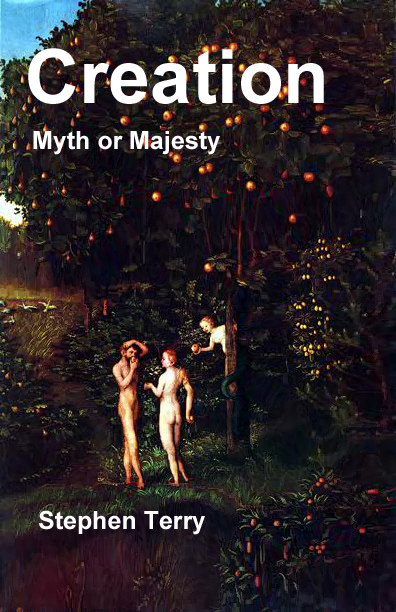
Stephen
Terry, Director

From Contamination to Purification
Commentary
for the February 29, 2020 Sabbath School Lesson
 " I looked up, and
there before me was a ram with two horns, standing beside the canal, and
the horns were long. One of the horns was longer than the other but grew up
later. I watched the ram as it charged toward the west and the north and
the south. No animal could stand against it, and none could rescue from its
power. It did as it pleased and became great." Daniel
8:3-4, NIV
" I looked up, and
there before me was a ram with two horns, standing beside the canal, and
the horns were long. One of the horns was longer than the other but grew up
later. I watched the ram as it charged toward the west and the north and
the south. No animal could stand against it, and none could rescue from its
power. It did as it pleased and became great." Daniel
8:3-4, NIV
With
this chapter, we return to the Hebrew portion of Daniel which we left for the
Aramaic shortly after chapter one. While the Aramaic portion was framed in the chiasm
of chapters two and seven, chapter eight seems to find a need to repeat again,
in similar fashion the imagery of chapter seven, this time with a ram and a
goat. However, the imagery is not a perfect fit. Instead of four beasts there
are only the two. Some feel that the first beast was eliminated because Babylon
was already passing from the scene, but according to the text, this was only
the third year of Belshazzar's reign. This was likely almost two decades before
the handwriting-on-the-wall scene where judgment was finally passed on Babylon.
The more likely reason is that this was written sometime well after the events regarding
Babylon and its successor on the world stage. The two-horned ram we begin with
here is often equated with Medo-Persia, and the single-horn goat with Alexander the Great
who defeated the Persian ruler, Darius III at the Battle of Issus in 333 BC.
After Alexander died about 10 years later, his empire was fought over by Ptolemy
I, Seleucus I, Lysimachus, and Antigonus
I. The wars raged on for 40 years and in the process, Alexander's son,
Alexander IV, the legitimate heir was killed. The transition was not as smooth
or complete as the symbology of Daniel would lead us
to believe.
The
four horns of the goat that replaced the one horn are equated by some to these
four individuals who fought over the remnants of Alexander's empire. While the
four horns may be paired off with the four heads of the leopard-like beast in
the previous chapter, no such equivalence exists in the image in Daniel,
chapter two. But in the literary chiasm of the Aramaic portion of the book,
chapter seven may be seen as a further clarification of chapter two. If that
was the intent of chapter eight, the author stumbles somewhat in forgetting
about the terrible beast with iron teeth as the intermediary between the four
horns or heads and the horn which assumes ascendancy. It hints at a later
attempt to adjust the prophetic symbolism to support what may be felt to be
correct facts based on a more informed perspective achieved after some of the
events have already played out. While the ten horns of the terrible beast in
chapter seven make way for a new horn by displacing three among the ten, the
goat of chapter 8 only has four horns and the new horn that arises only
displaces one of those four predecessors. If that horn is equivalent to the new
horn that arises from the ten-horned beast, and if as some state, those ten
horns are the ten toes of the statue in chapter two, and represent ten
kingdoms, where are those ten in the imagery of chapter eight? Especially,
where are they if this is an attempt at chiasm to add further clarification to
the previous symbols? There seems to be a breakdown here as though Daniel no
longer understood his own visions from the past. The new list of symbols works
a little, but only up to a point.
Unable
to envision the rise of a further world power beyond the partitioning that had
taken place after Alexander's death, only the possibility of a power rising
from the existing four may be seen as possible. Would Egypt, Macedon, Anatolia,
or Mesopotamia rise to rule? Those may have seemed the only options, and none
of them were the power that would eventually rise far to the west, Rome. Rome
was unique. According to legend, refugees from the Battle of Troy at least six
hundred years before Daniel's captivity in Babylon,
landed on the Italian peninsula where they eventually grew powerful enough to seize
the area from the Etruscans who already lived there. They did not grow to power
from one of Alexander's horns, predating him by centuries. The Book of Daniel
is dated to around the second century BC. Since Rome did not involve itself in
Palestine until the end of the Maccabean Revolt, the writer of chapter eight,
relying on personal knowledge and extant oral or written histories rather than
actual visions, even if he were writing during the revolt, had no way of
knowing about Rome or the importance it would play in future events. Instead the
historical Syrian enemy to the north may have been perceived to be the threat just
as it was long before the Babylonian captivity. Perhaps this is why some have
identified the "cleansing of the sanctuary" of verse 14 with the
Maccabean Revolt against the Seleucid Empire in the middle of the second
century BC. By this time the Seleucid Empire had eclipsed the other three and
likely seemed to be returning to resurrect past imperial glory. Antiochus IV, the
ruler of that empire, profaned the temple in Jerusalem and the later cleansing
of the temple from that desecration by the Jews is what is celebrated with Hanukkah
each year.
However,
if we look for a literal fulfillment of the 2300 days mentioned in Daniel in
relation to the Maccabean Revolt, we won't find it. But if it was speculation on
the part of the writer, it was not far off, for the time between the desecration
and the cleansing was between six and seven years (2160 ? 2520 days). It is
possible that this chapter and the ones to follow, grafted onto the Aramaic
text, were an attempt to grant prophetic significance to the Maccabees and what
they were trying to accomplish for the Jews. Ironically, it was the political
machinations of the Maccabees that may have ushered in the era of the terrible
beast of chapter seven. The revolt ended when Antiochus IV died and his army
withdrew. But perhaps fearful of further Syrian incursions, The Maccabees
allied themselves with Rome, ultimately setting the stage for Roman dominance
and occupation of the Levant. Although not really documented in chapter eight,
this was the power to come, the power that would be overcome by the Kingdom of
God as written in chapters two and seven, but not before crucifying God's Son.
Chapter eight appears to recast that scenario into the ongoing struggle against
the Syrians and perhaps reflects a Jewish perception that they are the Kingdom
of God that Daniel refers to. This may be further understood by the apparent
belief of the Jewish people in the New Testament and even held by some today that
the Messiah was to have been a conquering king who had come to set the Jewish
people free from their oppressors, like a contemporary Moses. When Jesus was
slain, the Disciples knew differently and mourned the loss, but for the rest of
the Jews, he really wasn't the Messiah anyway so what was the big deal?
At
this point, I should probably mention that for the Seventh-day Adventist
Church, taking the statement in Daniel 8:14 literally is
considered an inerrant position. Interpreting it as 2300 years based on the
idea of a year for a day as in Numbers 14:34, William Miller determined that
Jesus would return in 1844. In spite of Jesus' warnings about date setting and
the questionable universality of a day for a year for prophetic time periods,
those who continued to cling to Miller's calculations decided that he was
correct in all aspects except what Jesus was to do at that time. Hiram Edson, a
Baptist faith healer who was in fellowship with the disappointed Adventists
told the group he was with that it wasn't Jesus' coming to earth, but rather
his entry into the Holiest of Holies and the beginning of the Investigative
Judgment as to whom shall be saved. Whether truth or artifice it cannot be
established beyond question. It is like trying to prove the existence of God.
It is a matter of faith. Although there is nothing salvific about such a
belief, Seventh-day Adventist have chosen to make it
one of their fundamentals. In other words, while it won't keep one out of
heaven, it may keep one out of the church.
Why
is this so? Perhaps we can find the answer simply by referring to social media
where discussions too often evolve into heated arguments with people blocking one
another from future contact over sometimes very trivial disputes. What is apparent
from all of that is that sometimes the hardest thing for each of us to do is to
admit that we were wrong and move on from there. Instead, with conformational
bias, we look for every possible way to justify ourselves. Then buttressed by
those "proofs," we tend to make our position an inerrant platform
whereby we test everyone to see if they are worthy of fellowship with us.
Churches are often nothing more than a corporate manifestation of this
individual behavior. Instead of boiling down things to what is truly essential
to salvation as Jesus did with his parables, we tend to make things more and
more complicated over time until we end up with a Byzantine statement of belief
that weeds out all but properly inculcated from fellowship. This creates an
insularity that pushes each of us to wish to only deal with those who think and
act like us. How then do we cross the divide between us and others with the
gospel? It is possible to dot every "i" and
cross every "t" in Daniel, yet never bring anyone to Jesus. But as
sad as that is, it may even be possible to feel that we have every prophetic symbol
and timeline memorized and properly applied and not have found Jesus ourselves.
That would be a tragedy.
